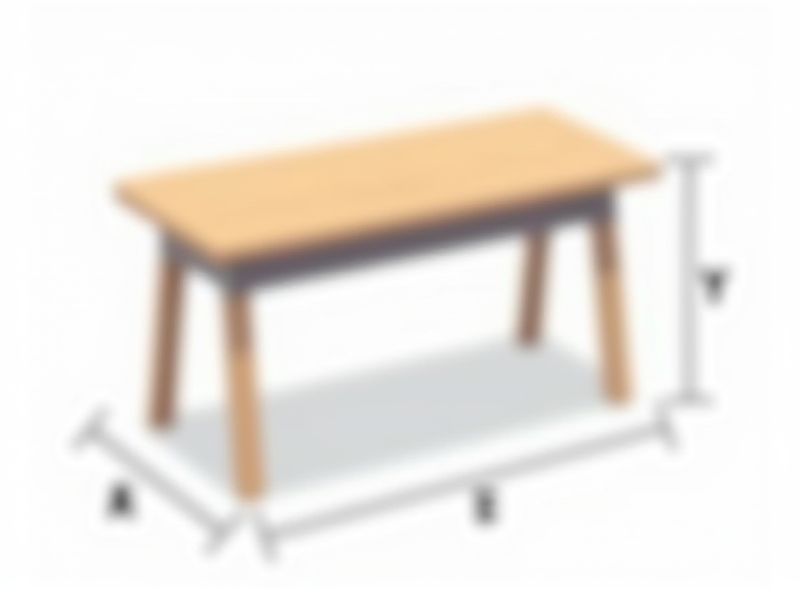
When choosing a desk, it's helpful to know the standard dimensions to ensure it fits comfortably in your space and meets your needs. Most standard desks are about 29 to 30 inches high, providing a comfortable height for writing or computer work when seated. The typical length is between 48 to 60 inches, while the depth usually ranges from 24 to 30 inches, allowing enough surface area for a monitor, keyboard, and supplies. Always measure your available space at home or in the office before buying, and consider your intended use--like whether you need extra room for dual monitors or storage.
Ergonomics Considerations
Ergonomic desks typically feature adjustable height settings, allowing users to switch between sitting and standing positions, promoting better posture and reducing strain. A standard ergonomic desk height ranges from 28 to 30 inches when sitting, while standing desks should be set between 38 to 42 inches. Incorporating other ergonomic tools, such as keyboard trays that maintain a 90-degree angle at the elbows, can further enhance comfort. Investing in an ergonomic desk can significantly reduce the risk of musculoskeletal disorders, with studies suggesting that proper setup can improve productivity by up to 30%.
Width Dimensions
When selecting a desk, the width dimension is crucial for ensuring effective workspace utilization. A standard desk width typically ranges from 48 to 72 inches, providing ample surface area for a computer, paperwork, and other essential items. For optimal comfort, consider allowing 24 to 30 inches of space for each user, ensuring enough room for movement and organization. Whether you need a compact desk for a small office or a wider option for collaborative work, understanding these measurements helps create a functional and efficient environment.
Depth Measurements
Desk standards typically prioritize depth measurements between 24 to 30 inches to ensure optimal ergonomics for users. This range allows ample space for comfortable positioning of computers, writing materials, and other essential tools. A desk depth of 30 inches is particularly beneficial for those needing extra workspace or accommodating dual monitors. Your workspace design should consider these measurements to enhance productivity and maintain a clutter-free environment.
Height Specifications
Height specifications for desks play a crucial role in ergonomic design, with the ideal height typically ranging from 28 to 30 inches for standard desks. Adjustable height desks often provide features that allow for a range of 24 to 50 inches, accommodating various user preferences and promoting better posture. For optimal comfort, your elbows should form a 90-degree angle when using a keyboard, which is directly influenced by the desk's height. Moreover, standing desks can significantly increase productivity, with studies indicating that users may experience a 10% boost in focus when alternating between sitting and standing.
Legroom Allowance
A standard desk typically provides a legroom allowance of around 24 inches in height and 30 inches in width, ensuring comfort and mobility for the user. Adequate legroom is crucial for maintaining good posture and reducing the risk of musculoskeletal issues during prolonged use. Many ergonomic designs offer adjustable features, allowing you to customize the height and configuration to better suit your needs. Investing in a desk that prioritizes legroom can enhance your productivity and overall well-being while working.
Material And Durability
When selecting a desk, the material quality directly influences both durability and aesthetic appeal. Desks crafted from hardwood, such as oak or maple, offer longevity with a lifespan often exceeding 20 years, while engineered woods tend to last around 10 years. Metal frames, commonly aluminum or steel, enhance stability and support heavy loads, making them ideal for extensive use. By choosing a desk with high-quality materials, you're investing in a piece that can withstand daily wear and tear while maintaining its functionality and appearance over time.
Weight Capacity
Weight capacity is a critical factor when selecting a desk, with most office desks supporting between 100 to 300 pounds, depending on their construction materials and design. Desks made from solid wood typically have a higher weight capacity, while those made from particle board may be less durable under heavy loads. To ensure stability and longevity, it's essential to consider the combined weight of all items you plan to place on the desk, including monitors, printers, and books. You can enhance your workspace not only by choosing a desk that meets your weight requirements but also by ensuring that it complements your ergonomic needs.
Storage Configurations
Storage configurations for desks are crucial for optimizing workspace efficiency. A typical office desk may include built-in drawers, shelves, or modular storage units that enhance organization; for instance, a desk with three drawers can augment space for files and supplies. Ergonomically designed desks often feature cable management systems to keep wires organized, which is essential in a tech-driven environment. Investing in a desk setup with adaptive storage solutions can significantly improve your productivity and workspace aesthetics.
Adjustable Features
An adjustable desk typically offers a height range of 24 to 50 inches, allowing you to easily switch from sitting to standing positions to promote better posture and reduce fatigue. Many models include programmable presets, enabling you to save your preferred heights for quick adjustments throughout the day. Ergonomic features, such as ample surface area--often around 48 by 30 inches--provide enough space for monitors, keyboards, and other essentials. Investing in an adjustable desk can enhance your productivity by creating a more comfortable and personalized work environment.
Style And Aesthetics
A desk's design significantly impacts both style and aesthetics in your workspace, enhancing productivity and ensuring visual appeal. For instance, desks made from high-quality materials such as solid wood or metal, typically retail between $200 to $1,500, while minimalist designs often prioritize clean lines and neutral colors. Ergonomic features, such as adjustable height options and built-in cable management, not only support comfort but also contribute to an organized appearance. Choosing a desk that resonates with your personal style can elevate your work environment, making it a more inviting and inspiring area.
